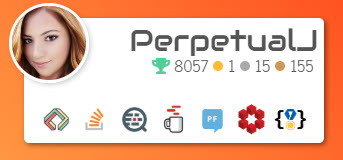So today I decided to continue refining my JavaScript skills (different post over on Code Review SE if you'd like to review the results) and utilized the Stack Exchange API (v2.2) to write a "user flair" replica.
In case you don't know what the flair that SE provides is:
The process was a little tedious in places, but only because I am still learning the concept of callbacks in JavaScript. Overall though, I believe they turned out pretty decent (only two shown here).
This got me thinking, in my testing I had to make several separate calls to get all of the information I needed to replicate the flair, but used two primary methods:
Do the future plans for the API include a "user flair" call that would give all of the following information for building custom user flair cards:
- Most Common Display Name or First Encountered
- I say most common or first encountered because your display name can be different on each SE network.
- Total Reputation
- Total Number of Badges (Gold, Silver, and Bronze)
- Link to SE Network Profile
- SE Network Profile Image URL
- This is because your profile image can be different on each SE network.
- Could use the display name here for the above to prevent the multiple networks since all users have to set their SE Network profile to match an existing sub-site, so could be considered the preferred account information.
- Top 10 Sites (or as many as possible up to this)
- Ordered by reputation descending.
- Reputation per site.
- Badge Counts per site (Gold, Silver, and Bronze)
- Link to Profile on Site
My biggest concern is that it would be underutilized and eventually fall out of support. Perhaps this is why it doesn't exist already?



